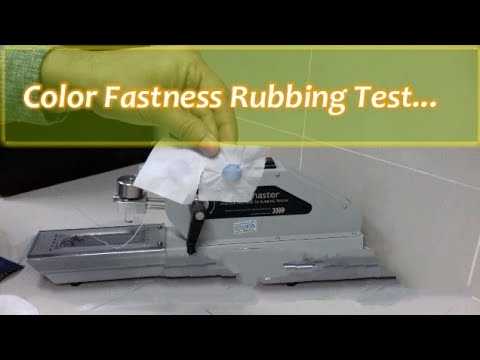Analysis of Influencing Factors and Precautions of Color Fastness to Washing

The color fastness to washing test is suitable for the color fastness to washing, color fastness to dry cleaning, color fastness to rinsing, washing powder performance and other tests on color fastness to washing and dry cleaning of various textiles. This article focuses on the color fastness to washing. Influencing factors and precautions of color fastness to facilitate the correct use of washing color fastness tester.

1. Influencing factors
The color fastness to washing of printed and dyed fabrics is related to the chemical structure of dyes, the combination of dyes and fibers, and the conditions of soaping. Usually, dyes containing water-soluble groups have poorer soaping fastness than dyes without water-soluble groups, and the more hydrophilic groups contained in the dye molecule, the lower the color fastness to washing. Such as acid dyes and direct dyes, because they contain more water-soluble groups, the color fastness to soaping is low, while dyes such as vat and sulfur do not contain water-soluble groups, and the color fastness to washing is higher.
The stronger the binding force of the dye to the fiber, the higher the color fastness to washing. Such as acid mordant dyes, acid mordant dyes and direct copper salt dyes, due to the intervention of metal ions, the combination between dyes and fibers is strengthened, and the color fastness to washing is improved. Another example is that reactive dyes are covalently bonded to fibers during color fixation, and the dyes become part of the fibers. Therefore, the color fastness to washing is better.
In addition, the color fastness to washing of the same dye is different on different fibers. For example, the color fastness to washing of disperse dyes on polyester is higher than that on nylon. This is because polyester has strong hydrophobicity and tight structure. The color fastness to washing is closely related to the dyeing process. If the dye is not dyed well, the floating color will not be removed cleanly, which will lead to a decrease in the color fastness to washing. Soaping conditions also have a great influence on the color fastness to washing of dyed goods. The higher the temperature, the longer the time, and the greater the force of washing, the more serious the fading and staining will be after soaping.
2. Precautions
After the test, attention should be paid to "cleaning" and "squeezing dry" of the sample. Because the residual dye contained in the residual liquid will aggravate the staining of the lining fabric and affect the test results. If the cleaning is not sufficient, the sample can be placed in warm water at about 40 ℃ and rinsed several times before drying.
2023-06-28 09:58

